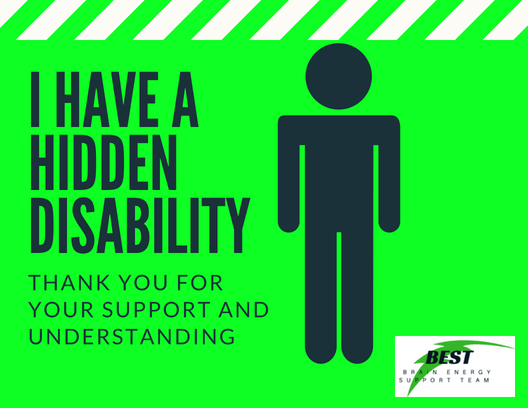

The inability to "see" disability, the absence of "visible" supports such as canes and wheelchairs, can compound such thoughts. People are quick to make assumptions regarding disability. The list of invisible disabilities is endless but includes psychosocial disabilities such as depression, bipolar disorder, schizophrenia and anxiety disorders, and post-traumatic stress disorder as well as conditions like E pilepsy, MS, Rheumatoid arthritis, Chrohn's and Coeliacs disease, Autism, Ehlers Danlos Syndrome, Irritable Bowe l Syndrome, E ndometriosis, Diabetes, Lyme disease, migraines, Inflammatory Bowel Disease, Hypoglycemia, HIV/AIDS, Chronic Fatigue Syndrome, Cysti c Fibrosis, ADD/ADHD, intellectual and learning disabilities, and other associated conditions. Many people find it hard to understand that disability can exist even if it is not evident in a visible way.

Invisible disabilities (or hidden disabilities) are defined as disabilities that are not immediately apparent. I still get abused and am forced to defend myself on a regular basis just for using the systems put in place to help me, to make things easier." "It doesn't seem to matter that my Australian Disability Parking Scheme pass is clearly displayed in my windscreen. Unfortunately, disability isn't always visible, and so people with disabilities rightfully using their mobility parking passes are sometimes challenged by irate people (with the best of intentions) for parking in accessible parking spaces. This happens when people wrongly assume that to be "disabled", they must have some visible difference, i.e., use a wheelchair, carry a white cane, use an assistance dog, walk with a distinctive gait or limp, or display some other obvious sign of disability. Being verbally abused by random strangers in car parks shouldn't be a thing people with disabilities should have to deal with daily.


 0 kommentar(er)
0 kommentar(er)
